It was the summer of 1966 that I first visited Hawaii. I’ve been back many times since, visiting four of the islands, but the first time was memorable.
Next week I will be there for the US Conference of Mayors.
For the three summers prior to 1966, I had a job as a Student Trainee Architect with the National Park Service. I spent two summers in Yellowstone and one summer in San Francisco. This was a program that had the objective of grooming student architects, landscape architects and engineers for a National Park Service career. It was the best summer job I ever had, but the career motivation didn’t work with me. After a couple of years in the Army, I had pretty much had it with government jobs. But it did work for others. John Reynolds, a landscape architect with whom I worked in Yellowstone, went on to become the deputy director of the National Park Service, retiring in 2002 before becoming executive vice president of the National Park Foundation and a board member of the Presidio Trust. An architecture student I worked with in Hawaii, Ralston Nagata, later became administrator of the Hawaii State Parks system.
My assignment for the summer of 1966 was with the Historic American Buildings Survey (HABS), administered by the National Park Service, to document historic buildings in Hawaii.
But first, I had to attend six weeks of ROTC summer camp at Fort Sill, OK, ending in mid-July. ROTC Summer Camp was mandatory for advanced ROTC and was a combination of basic combat training and leadership training, part of the curriculum that eventually prepared us to be commissioned as second lieutenants in the U.S. Army. Fort Sill was hot, dry and boring. What I remember most is that I saw my first armadillo there.
I had arranged to show up mid-summer for the HABS job in Honolulu. I talked a friend of mine, John Backus, also at ROTC camp, into going with me. As ROTC cadets we were allowed to travel free as passengers on military aircraft, space available. We also had to be in uniform. Our plan was to fly free from Tinker Air Force Base in Oklahoma to Hawaii.
The first leg of the trip worked as planned, delivering us to quickly to Travis Air Force Base near San Francisco, After about three days of waiting for a free ride, we gave up and headed for San Francisco International Airport. Back then, the credit card companies handed out credit cards to college student like candy, so we bought two tickets to Honolulu on my credit card.
We arrived in Honolulu about midnight with almost no money and no place to stay. We told the cabbie to “take us to the beach,” which seemed like a good idea at the time. Somehow, he dropped us at Fort DeRussy, maybe because we were in uniform. We went to sleep on a lawn and were awakened by a cop the next morning. He couldn’t figure out who we were. ROTC uniforms are the same as Army uniforms, but have no rank insignia or unit patches. He was suspicious. We weren’t really in the Army, so he couldn’t call the MPs. He was going to arrest us for vagrancy or something, but we eventually talked him out of it.
Our first stop was at a bank in downtown Honolulu where we tried to get a loan, based on the income from the job I was about to start. It was clearly small potatoes, but the loan officer gave me a loan for several hundred dollars. We bought a Honda 125 cc motorcycle and started looking at ads in the newspaper for rooms to rent.
We found a place up in Manoa Valley not far from the University. It was the home of a professor, who with his wife, had left for the summer, leaving the house in the care of their teenage and 20-something kids. The boys had decided to rent out a room to make some spending money, and we signed up.
The next day, I showed up for work in the temporary HABS office that occupied a small part of a vast but decaying old church that was slated to be demolished to make way for the new Hawaii State Capitol building. I joined a team of eight other students from Hawaii, Montana, Kansas and Texas. Our supervisor was an architecture professor from Texas A&M. They had already been at work for a couple of months and had finished most of the Iolani Palace. I was assigned the last part of the Iolani Palace complex, the bandstand.
Later, I worked on the Kawaiahaʻo Church (See https://www.loc.gov/resource/hhh.hi0050.sheet?st=gallery for full set) and the Kamehameha V Post Office (see https://www.loc.gov/resource/hhh.hi0029.sheet/?q=post+office&sp=2) for full set.
The following is from the September 14, 1966, Honolulu Star-Bulletin:
Thomas Butt had the Palace Bandstand all to himself. He arrived here when the local survey was well underway, after attending R.O.T.C. summer camp on the Mainland. It took him two weeks to measure the 28-foot octagonal bandstand and translate his Measurements into detailed drawings.
His work was complicated by the discovery of photographs in the Public Archives which show that the bandstand has had three different types of columns since it was built in 1883. All three types are included in the finished drawings.
The two guys we lived with were great about showing us around both Honolulu and the island of Oahu. Both were students at the University of Hawaii and were surfers. One of the guys was a dwarf (“little person”) and an accomplished surfer. Hanging out with him gave me a lot of insight into what it’s like to be a person with a marked physical difference.
When not working, we mainly hung out at the beach, drank a lot of beer and tried to meet girls -- with minimal success.
I left Oahu only once, taking a weekend trip to Maui, went to the top of Haleakalā, slept on the beach and did some sketches in Lahaina.
I stopped wearing shoes altogether, and soon accumulated a thick protective coating of asphalt on the soles of my feet from riding the motorcycle and putting my feet down while stopped in the streets.
All too soon, summer and the job were over, and it was time to go back to school, my final year.
We had a few minor wrecks on the motorcycle; luckily no one was hurt. The last one was the night before I left. The cop let me go only with the promise that I would be leaving Hawaii the next morning and never come back. He told me if he ever saw me again, I would be going to jail.
I think the motorcycle was in such bad shape, I rode it to the airport and just left it there.
Below are the drawings I created, all now in the Library of Congress.
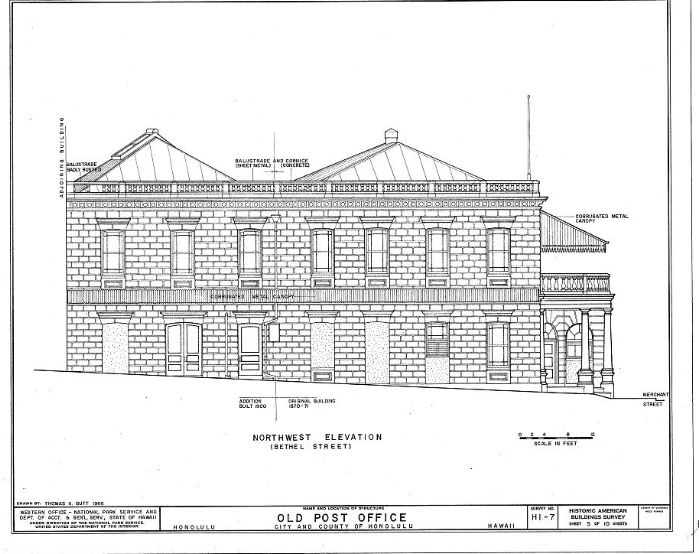
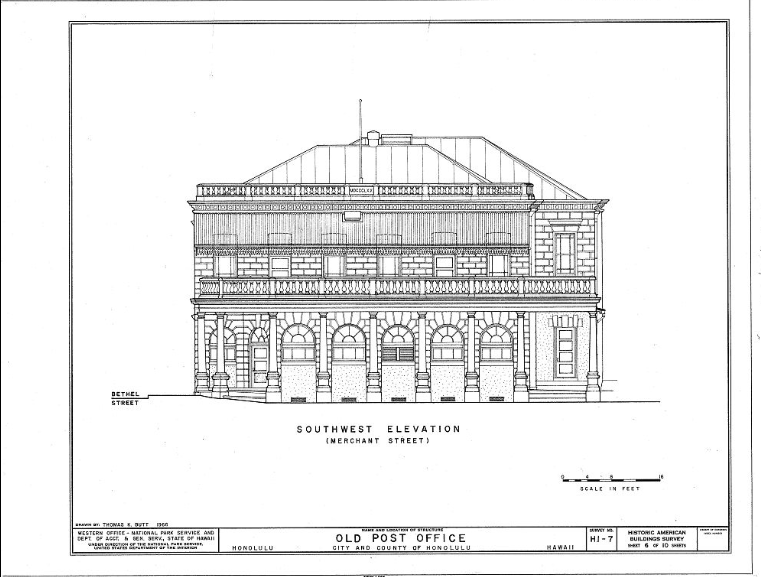
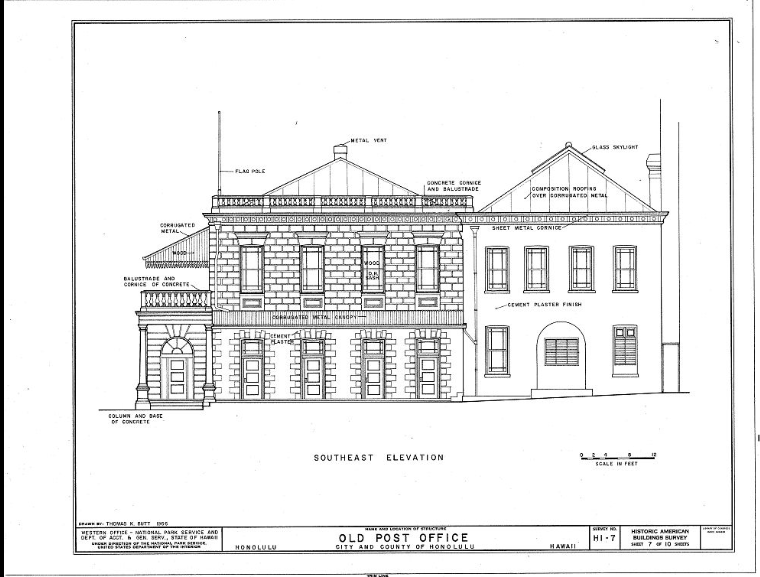
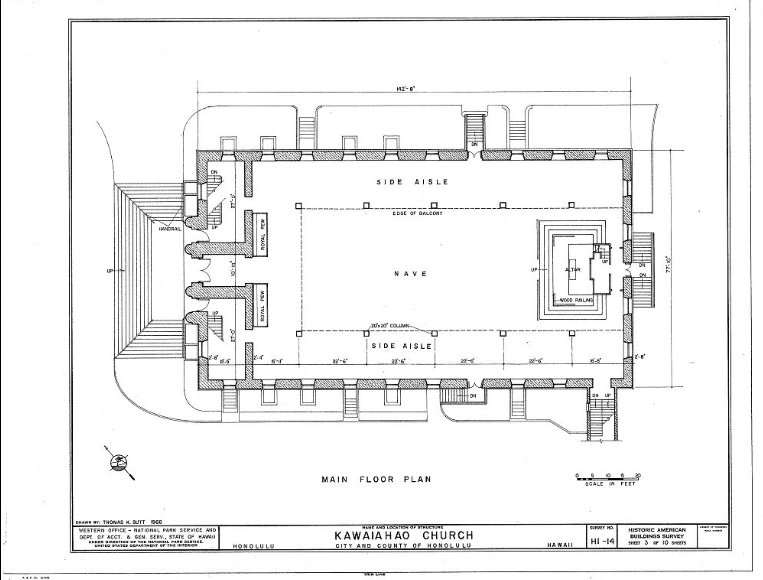
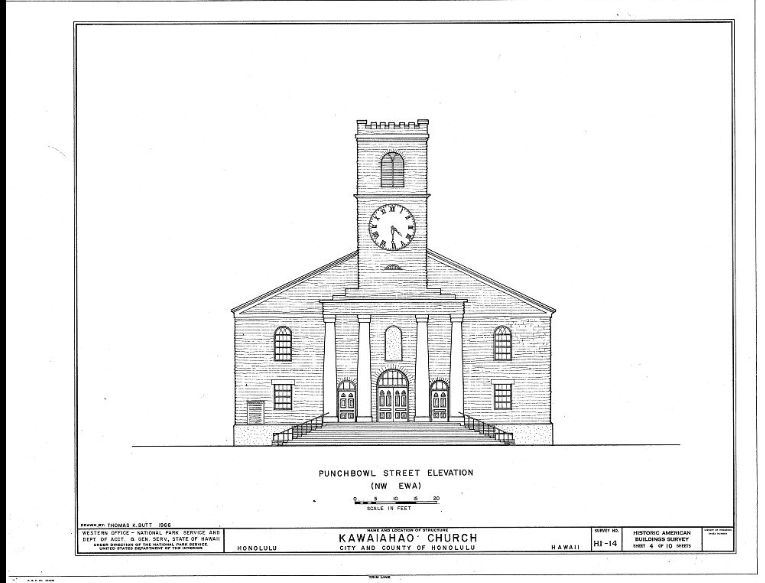
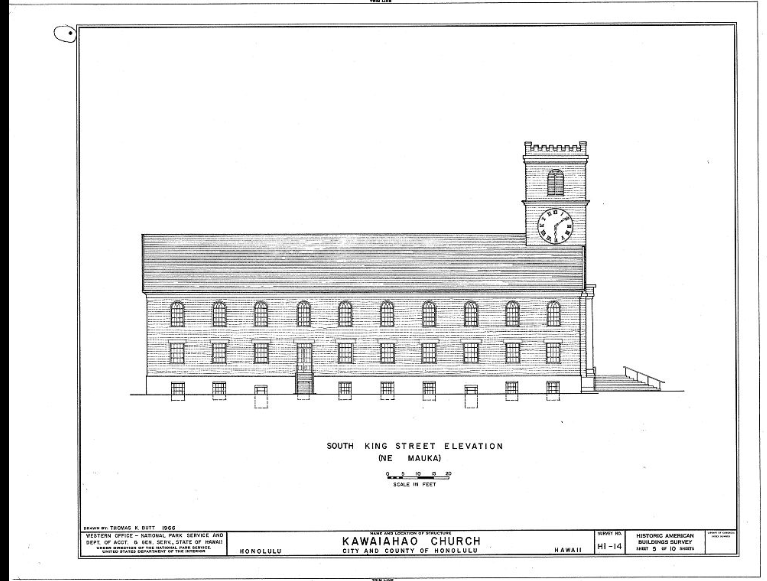
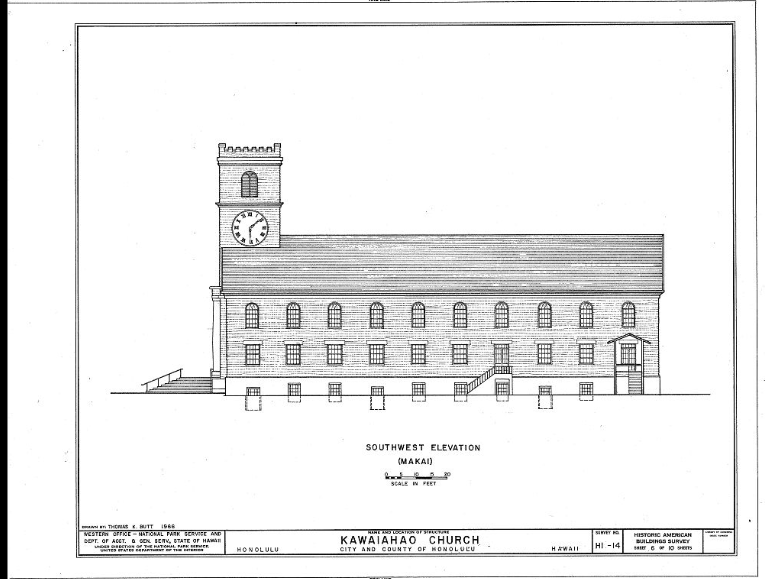
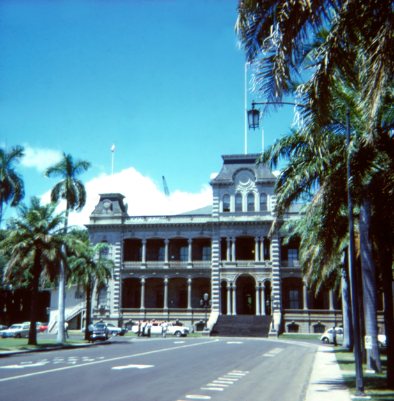
Figure 1 - Iolani Palace in 1966
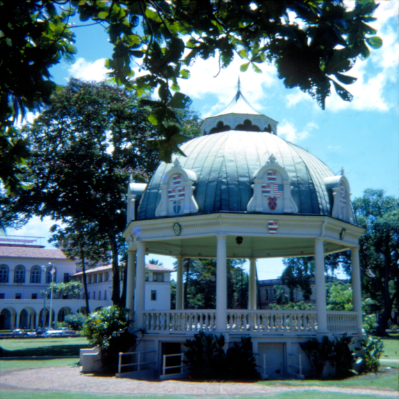
Figure 2 - Iolani Palace bandstand 1966
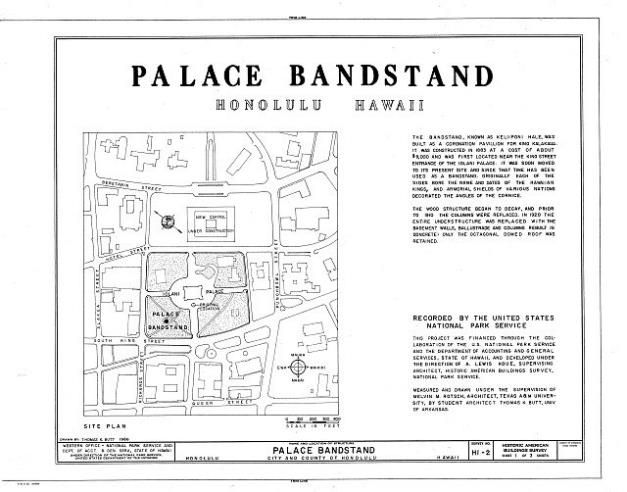
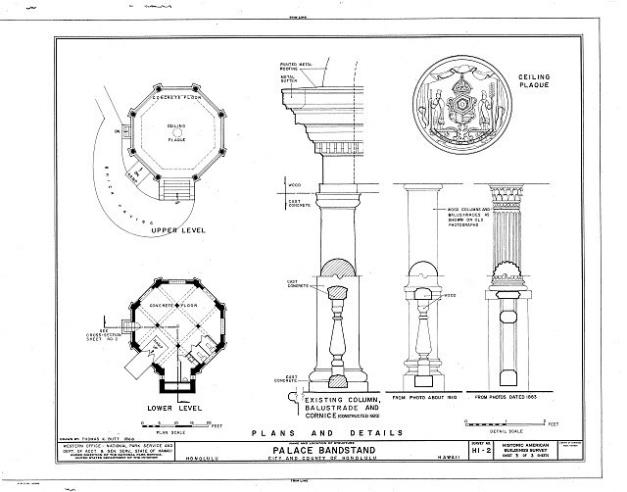
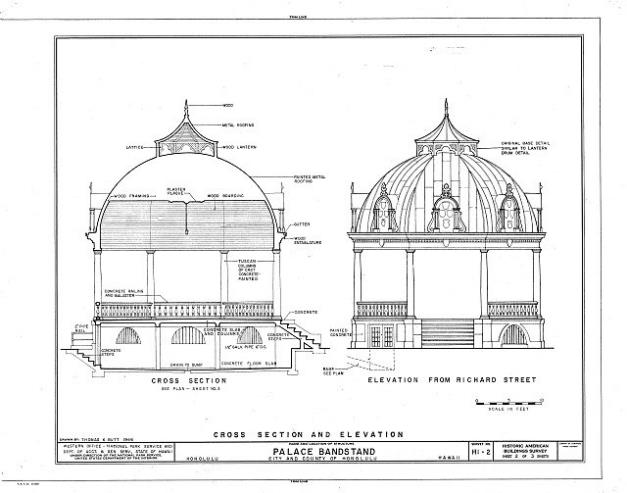
|

